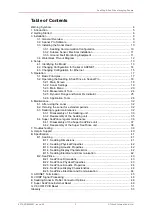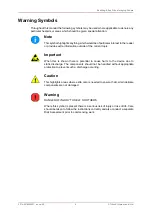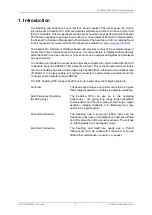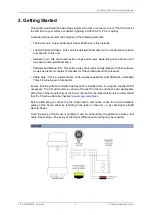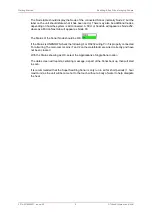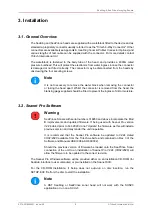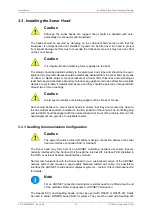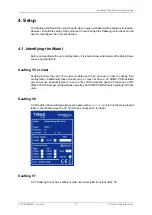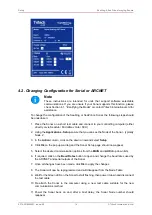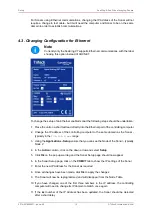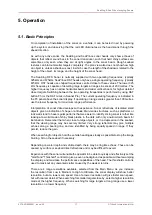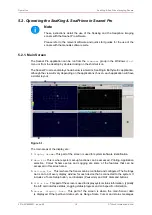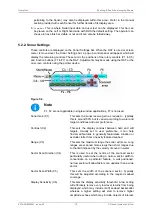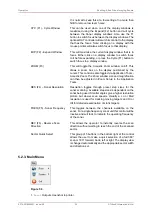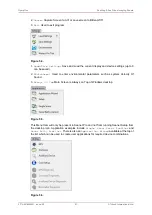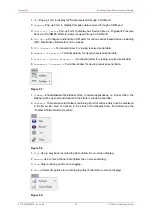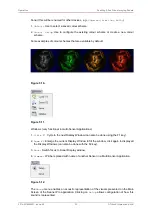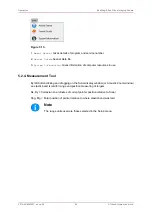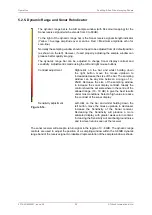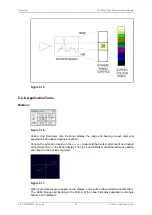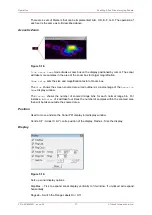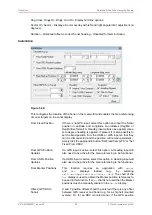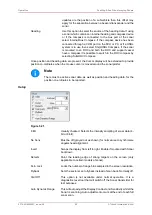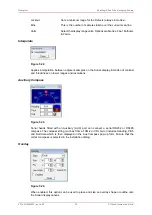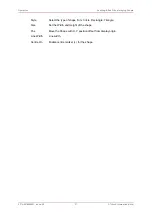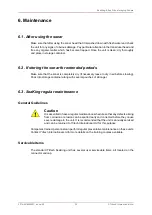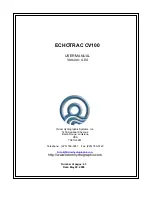
SeaKing & SeaPrince Imaging Sonars
0374-SOM-00001, Issue: 08
17
© Tritech International Ltd.
5. Operation
5.1. Basic Principles
On completion of installation of the sonar on a vehicle, it can be tested in air by powering
up the system and observing that the red LED illuminates as the head scans through the
ahead direction.
As with any active sonar, the SeaKing and SeaPrince sonar heads only show echoes of
objects that reflect sound back to the sonar transducer, such that hard shiny surfaces are
sometimes only seen when they are at right angles to the sonar beam. Rough seabed
textures can blot out smaller targets completely. The plan view also does not show how high
an object is, unless a shadow is cast, in which case the length of the shadow is related to the
height of the object, its range, and the height of the sonar head.
The SeaKing DFS Sonar is normally supplied with two operating frequencies, typically
325kHz and 675kHz. SeaPrince DST heads only have a single operating frequency, typically
675kHz. DST heads use chirped frequencies centred close to these values. The lower 325
kHz frequency is capable of detecting large targets at ranges in excess of 200 metres. The
higher frequency has a narrow horizontal beam and wider vertical beam, for higher detail of
closer targets. Switching between the two operating frequencies is performed by using RAT
button F5 (or the RAT mimic in Seanet Pro). The current operating frequency is indicated in
the F5 panel above the sonar display. If operating on range scales greater than 100 metres,
use the lower frequency for maximum range performance.
Interpretation of sonar data develops with experience. Sonar reflections of isolated small
objects give no indication of shape or attitude. Man-made structures, such as platforms or
rock walls tend to have regular patterns that are easier to identify. Using sonar is rather like
looking at a world made of shiny black plastic, in the dark, with only a narrow torch beam for
illumination. Remember that when close to large objects, or in a depression in the seabed,
that the viewing range may be severely limited. Very strong reflectors may give multiple
echoes along a bearing line, and are identified by being equally spaced in range. If they
persist, reduce the gain.
When searching for objects, hold the vehicle heading as steady as possible to stop the image
blurring. Sit on the seabed if necessary.
Depending on water depth and vehicle depth, there may be ring like echoes. These can be
caused by surface or seabed direct reflections and may be difficult to avoid.
Experience with the sonar will enable the operator to be able to quickly and effectively set the
"Gain" and "Threshold" controls to give as even a background as possible, without swamping
the display, and maximise the performance capabilities of the head. The threshold control is
used to mask out any unwanted clutter caused by the weaker returns.
There are 4 range resolutions available, selected from the Main Menu. As you increase
the resolution from Low to Medium to High to Ultimate, the sonar display will show better
resolution, but at a lower scan speed. Use of a lower resolution will give faster scan speed,
but with coarser detail. When searching for smaller targets close by, select a higher resolution
mode at the higher frequency. When searching for large targets at long range use a lower
resolution on a lower frequency

